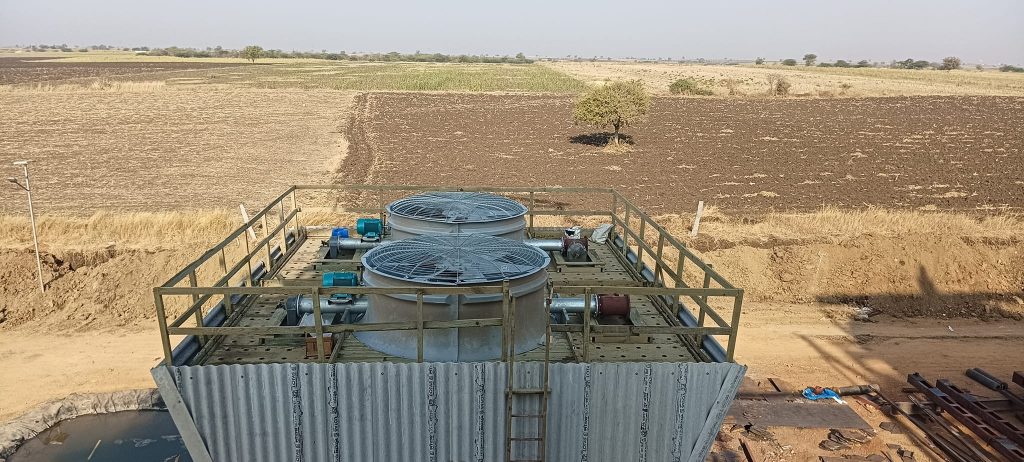Splash Bars in Cooling Towers: Definition, Purpose & Materials
A splash bar is a key component in wooden cooling towers (and some older designs) that helps maximize heat transfer efficiency by breaking up and spreading water into smaller
droplets, increasing its exposure to cooling air.
1. What is a Splash Bar?
- Physical Description: Thin, horizontal wooden slats (or plastic bars) arranged in a grid-like pattern within the cooling tower’s fill section.
- Function:
- Disrupts falling water, creating smaller droplets for better evaporation.
- Increases air-water contact time, improving cooling efficiency.
- Alternative Names: Splash grids, splash deck, or fill media (in older designs).
2. How Splash Bars Work
- Hot water enters the tower and is distributed over the splash bars.
- Water hits the bars, breaking into tiny droplets (instead of flowing in a solid stream).
- Air passes through the gaps between bars, absorbing heat from the water droplets.
- Cooled water collects in the basin below for reuse.
Visualization:
text
Hot Water
↓
Splash Bars (wood/PVC) → Breaks water into droplets
↓
Airflow (← or ↑) → Cools droplets via evaporation
↓
Cold Water Basin
3. Materials Used for Splash Bars
Historically made of wood, modern designs often use more efficient materials:
| Material | Pros | Cons | Best For |
| Redwood/Cedar | Natural rot resistance, durable | Requires maintenance, costly | Older wooden towers |
| Treated Pine | Cheaper than redwood | Needs chemical treatment | Budget-friendly retrofits |
| PVC/Plastic | Lightweight, corrosion-proof | Less structural strength | Modern retrofits |
| Stainless Steel | Extremely durable | Expensive, heavy | Harsh chemical environments |
4. Splash Bars vs. Modern Film Fill
Older cooling towers used splash bars, while newer designs prefer film fill:
| Feature | Splash Bars | Film Fill (PVC/PP) |
| Design | Wooden/plastic grids | Corrugated plastic sheets |
| Efficiency | Lower (droplet-based) | Higher (thin water film) |
| Maintenance | Prone to clogging/scaling | Easier to clean |
| Airflow Resistance | Lower (good for Cross flow) | Higher (needs more fan power) |
Why Film Fill Replaced Splash Bars?
- Better heat transfer (more surface area).
- Less clogging from debris/scaling.
- Lighter weight (no structural stress).
5. When Are Splash Bars Still Used?
- Legacy wooden cooling towers (maintenance/retrofits).
- Low-cost industrial applications where efficiency isn’t critical.
- High-corrosion environments (if using stainless steel bars).
Key Takeaways
- Splash bars are old-school fill media that cool water by breaking it into droplets.
- Wooden splash bars (redwood/cedar) are durable but need upkeep.
- Modern towers use film fill (PVC) for better efficiency and lower maintenance.
